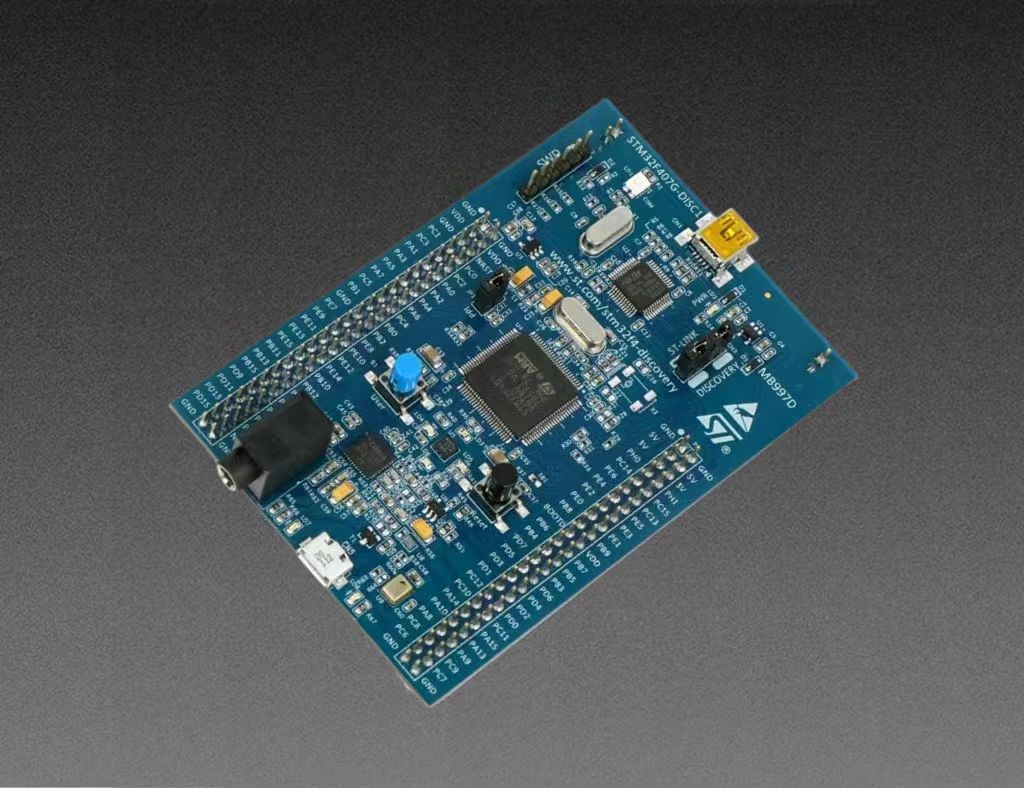Exploring STM32F407: In-Depth Analysis of a High-Performance Positioning Microcontroller
In today's rapidly evolving technological landscape, positioning technology plays a crucial role across numerous fields, be it intelligent transportation, drone navigation, or industrial automation. Precise positioning capabilities are key to achieving efficient control and data acquisition. As a high-performance microcontroller introduced by STMicroelectronics, the STM32F407 has become a core choice for many positioning device designs due to its powerful processing capabilities and abundant peripheral resources. This article will delve into the working principles, functional characteristics, application scenarios, and related alternative products of the STM32F407 positioner.
Introduction to the STM32F407 Microcontroller Chip
The STM32F407 is a high-performance microcontroller based on the ARM Cortex-M4 core, with a clock speed of up to 168 MHz and a Floating Point Unit (FPU), capable of efficiently handling complex mathematical computations. Its built-in Flash memory capacity reaches 1 MB, and RAM capacity is 192 KB, providing ample storage space for the operation of positioning algorithms. Furthermore, the STM32F407 integrates a variety of peripheral interfaces, including USB OTG, Ethernet MAC, CAN bus, SPI, I2C, etc., enabling it to flexibly adapt to various application scenarios.
In the design of positioners, the STM32F407's advantages are mainly reflected in the following aspects:
● High-performance computing ability: Capable of real-time processing of data from sensors such as GPS and IMU (Inertial Measurement Unit).
● Low-power design: Suitable for portable positioning devices powered by batteries.
● Abundant peripheral resources: Supports multiple communication protocols, facilitating data interaction with other devices or systems.
● High reliability: Industrial-grade temperature range and anti-interference capabilities, suitable for applications in harsh environments.
Working Principles and Functions of STM32F407 in Positioner Design
In positioner design, the STM32F407 works by cooperating with positioning modules (such as BeiDou GPS multi-mode satellite positioning modules) to receive satellite signals. Utilizing the STM32F407's powerful processing capabilities, it parses the NMEA 0183 protocol messages transmitted by the positioning module. These messages contain rich positioning information, such as latitude, longitude, time, and speed. The STM32F407 positioner supports the parsing of multiple message types, like GNGGA, GPGSA, BDGSA, GPGSV, BDGSV, GNRMC, and GNVTG, ensuring the acquisition of comprehensive and accurate positioning data. It also processes and stores the parsed data, transmitting positioning information to other devices through serial ports, networks, and other means according to different application requirements. The functional characteristics of the STM32F407 in positioner design include:
1. High-precision positioning: Supports multi-mode satellite positioning (GPS, GLONASS, BeiDou, etc.), with positioning accuracy reaching meter-level or even centimeter-level.
2. Real-time motion tracking: Achieves dynamic attitude detection and motion trajectory tracking through IMU.
3. Data storage and transmission: Supports local storage and remote transmission of positioning data, facilitating subsequent analysis and processing.
4. Low-power mode: Can enter low-power mode during standby or low-load conditions to extend battery life.
Application Fields of STM32F407 MCU
With its high performance and multifunctional characteristics, the STM32F407 MCU chip is widely used in intelligent transportation, drones and robots, industrial automation, outdoor sports and health monitoring, among other fields. Specific applications include:
● In-vehicle navigation systems: In automobiles, the STM32F407 can parse BeiDou GPS data, providing drivers with precise positioning information, enabling the navigation system to plan routes more accurately, avoid congestion, and greatly improving the accuracy and reliability of navigation.
● Drone positioning: For drones, high-precision positioning data is crucial for flight safety and path planning. The STM32F407 provides precise positioning for drones, ensuring they can fly according to predetermined routes and avoiding collisions and other dangerous situations.
● IoT devices: In today's booming IoT industry, many devices need to achieve precise positioning and data acquisition. The STM32F407 integrated into IoT devices helps the devices determine their own positions and transmit the collected data to the cloud or other terminals, realizing intelligent device management.

Equivalent/Alternative Products
Although the STM32F407 performs excellently in positioner design, in some specific scenarios, other alternative solutions may need to be considered. When selecting alternative products, factors such as performance, cost, development tools, and ecosystem support should be comprehensively considered. The following are several microcontrollers with functions similar to those of the STM32F407:
1. STM32F429: Belongs to the same STM32F4 series as the STM32F407 but adds an LCD controller, suitable for applications requiring graphical display.
2. NXP LPC1788: Based on the ARM Cortex-M3 core, its performance is slightly lower than that of the STM32F407 but has a more competitive price.
3. TI Tiva C Series TM4C1294: Integrates Ethernet MAC and USB interfaces, suitable for applications requiring high-speed communication.
4. Microchip SAM E70: Based on the ARM Cortex-M7 core, it offers stronger performance and is suitable for scenarios requiring higher computational capabilities.
Conclusion
With its powerful processing capabilities, abundant peripheral resources, and wide range of application scenarios, the STM32F407 has become a popular choice in embedded positioning system design. By deeply understanding its working principles and functional characteristics, developers can better utilize this microcontroller to achieve high-precision, low-power positioning solutions. Meanwhile, selecting suitable alternative products for different application requirements can also bring higher cost-effectiveness and flexibility to projects.
Website: www.conevoelec.com
Email: info@conevoelec.com







